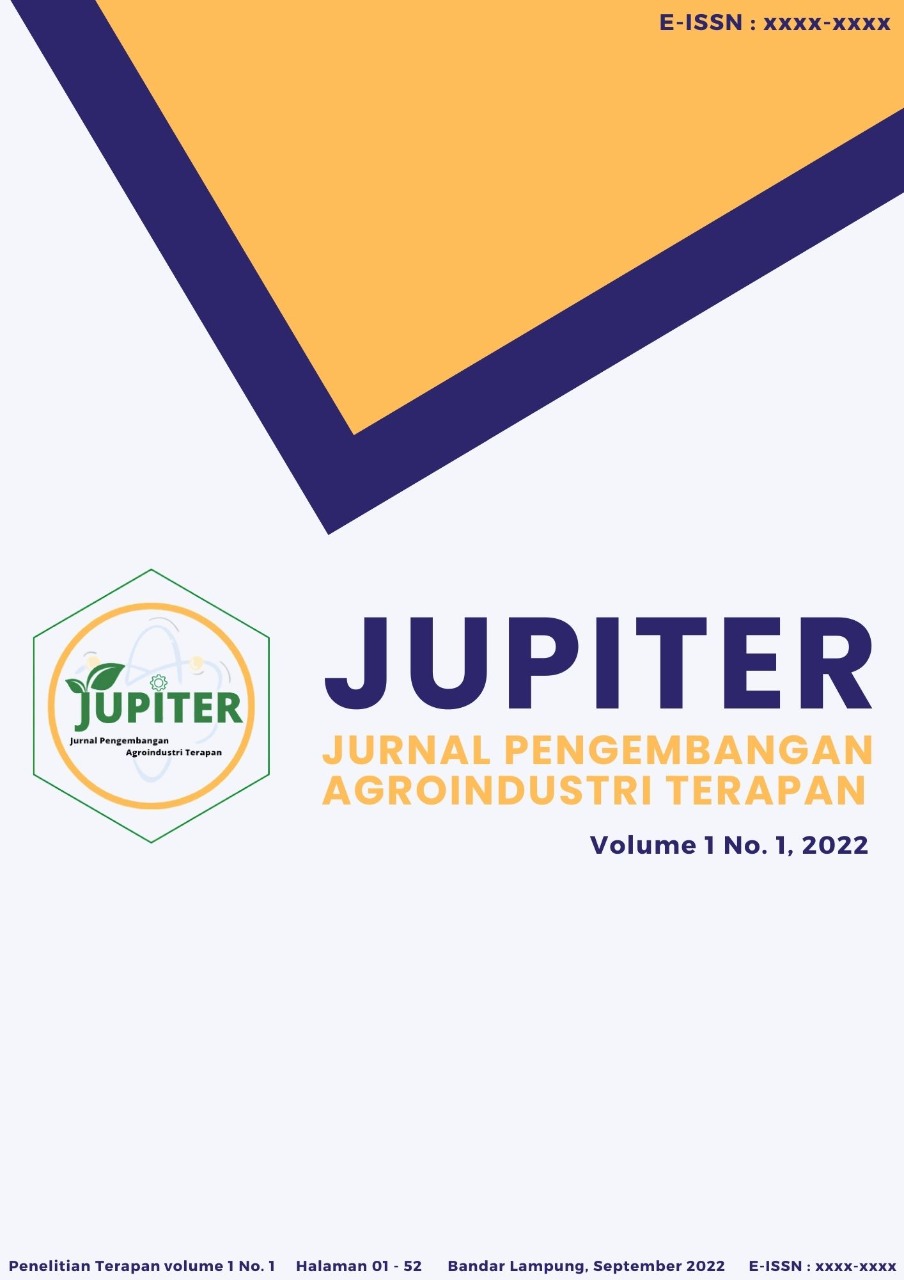AN UTILIZATION OF AGRICULTURAL WASTE AS A SUBSTRATE FOR PRODUCING CELLULASE ENZYME BY ASPERGILLUS NIGER
DOI:
https://doi.org/10.25181/jupiter.v1i1.2655Kata Kunci:
agricultural waste, aspergillus niger, basal medium, cellulase enzymes, delignificationAbstrak
Fresh Fruit Bunches (FFB) of oil palm, bran, straw, and bagasse are agricultural wastes whose availability is very abundant in Indonesia. The agricultural waste is lignocellulosic waste which still has economic value if further processing is carried out, namely as a substrate in the production of cellulase enzymes. Cellulase enzymes are commonly used in various industries such as food biotechnology, textiles, animal feed, paper, and agriculture to degrade cellulose with its main products, namely glucose, cellobiose, and cellooligosaccharides. In producing cellulase enzymes, it is necessary to have microorganisms that have a high ability to produce enzymes, one of which is Aspergillus niger. The purpose of this study was to determine the activity of crude cellulase enzyme, protein content, and specific activity of cellulase enzyme from agricultural waste which includes FFB, bran, straw, and bagasse. The research methods included preparation of Aspergillus niger culture, delignification, basal medium preparation, cellulase enzyme production, enzyme extraction, crude cellulase enzyme activity test (CMC-ase), lowry method protein content test, and determination of cellulase enzyme specific activity. The study showed that the highest crude cellulase enzyme activity in bran was 26.83 U/ml, the highest protein content in bagasse was 63.42 g/ml, and the highest specific activity of cellulase enzyme in straw was 0.9818 U/ml. The high enzyme activity is influenced by the cellulose content in the material, type of substrate, media, substrate concentration, pH, and temperature.Unduhan
Data unduhan belum tersedia.










